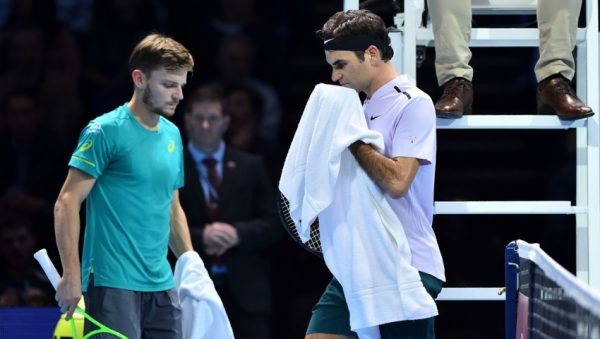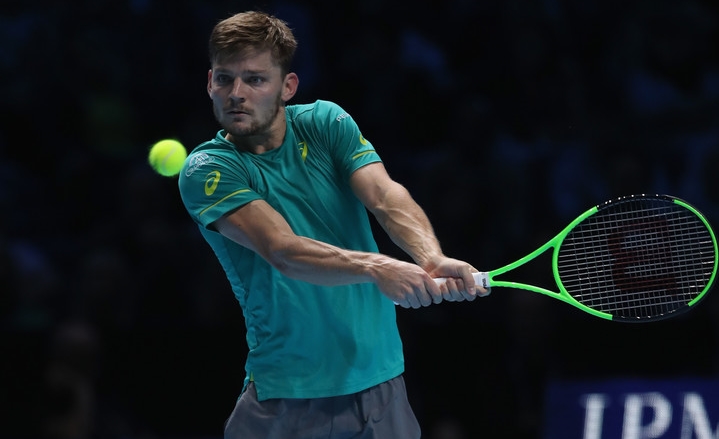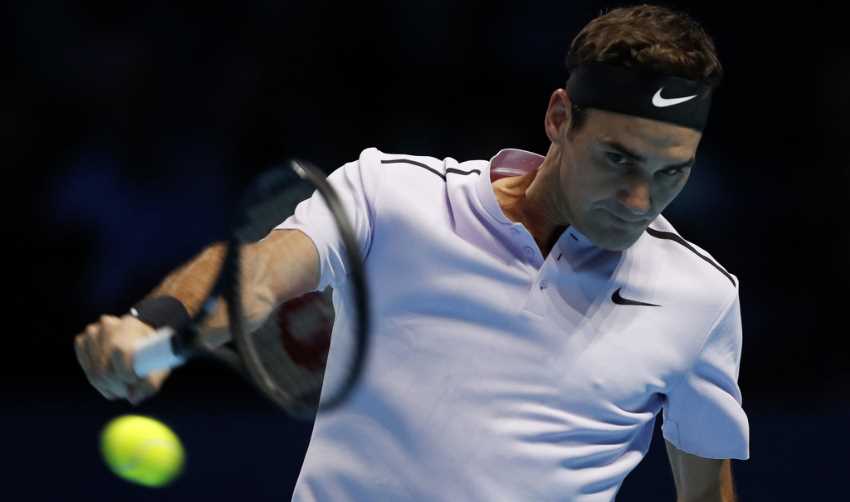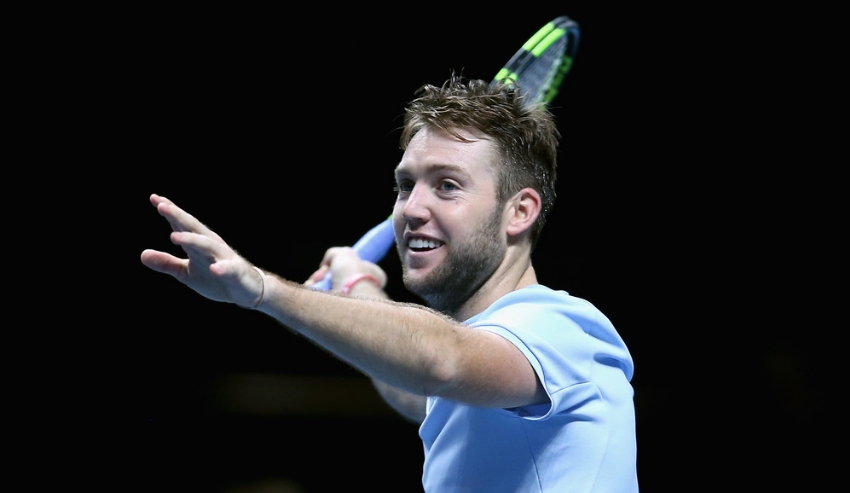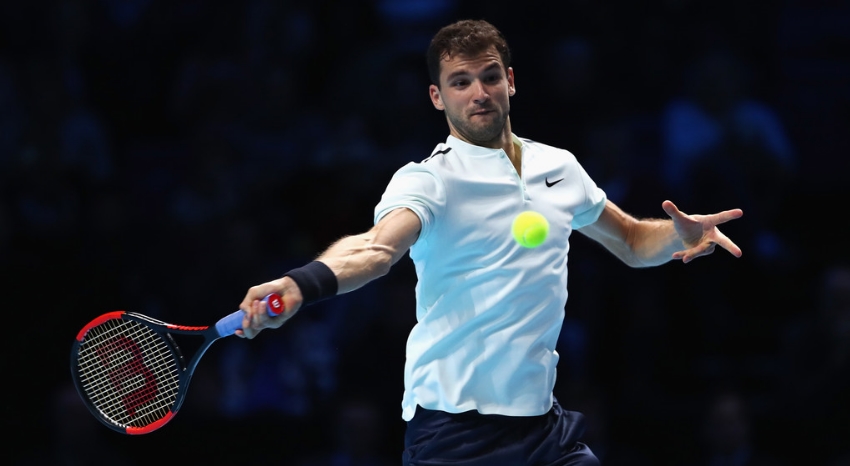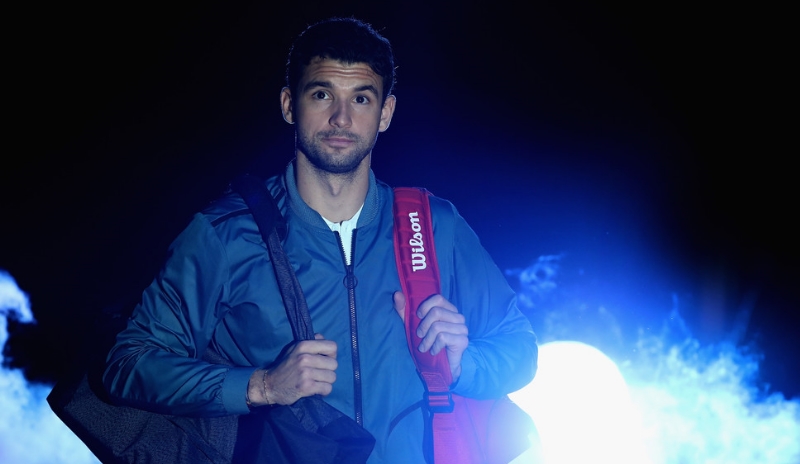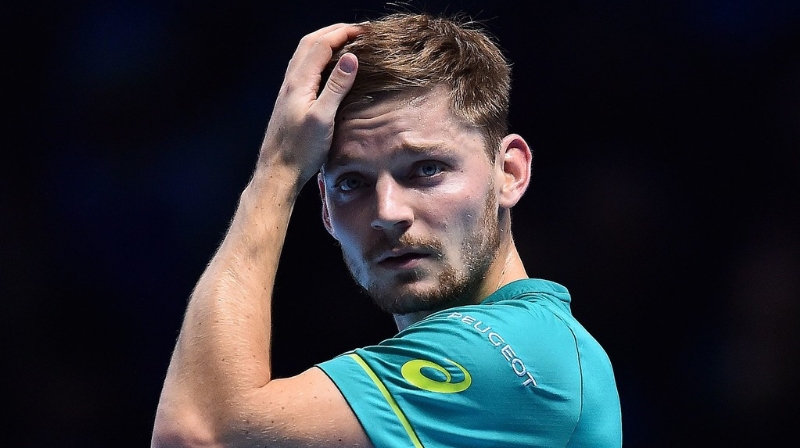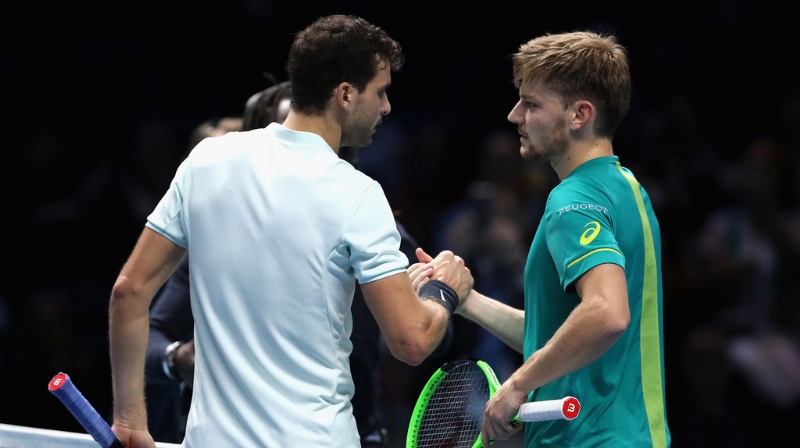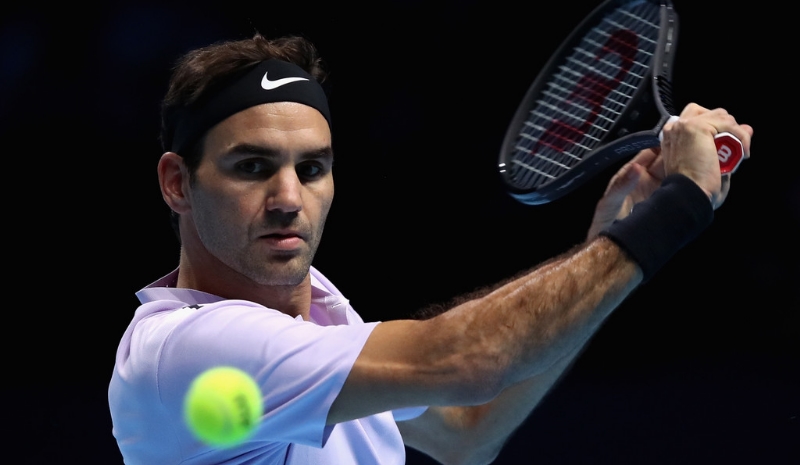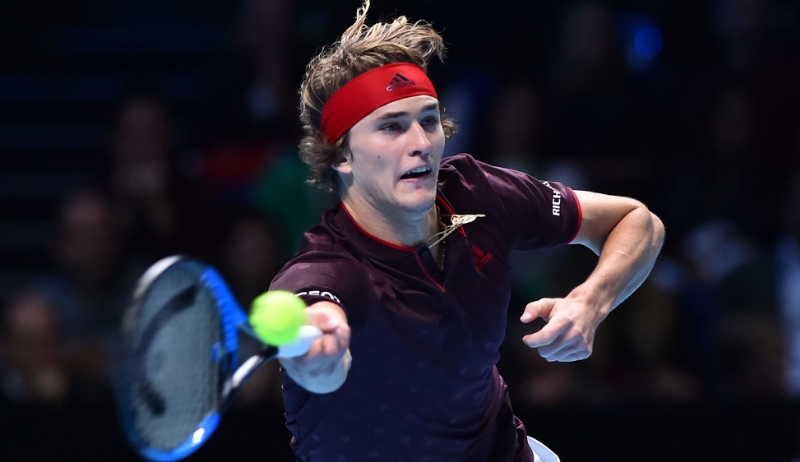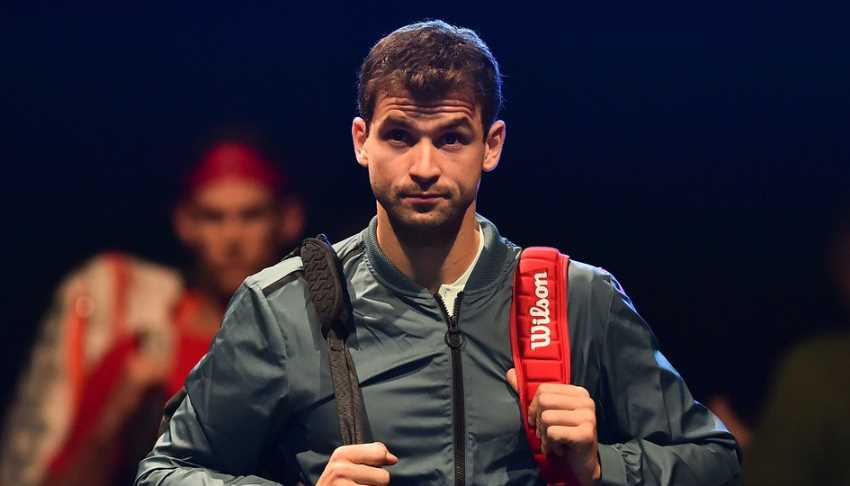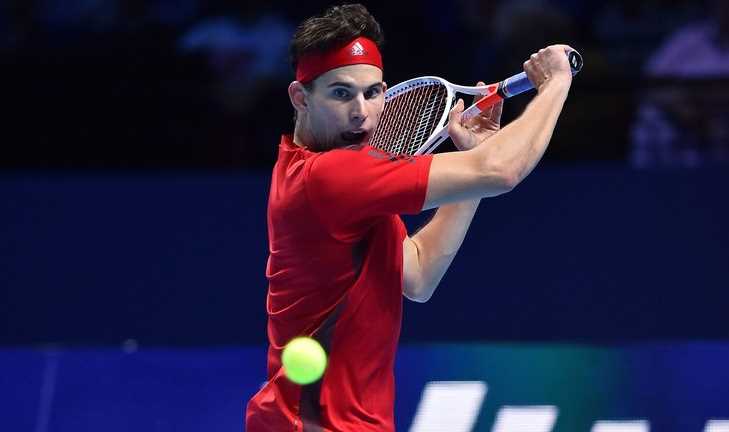David Goffin pulls the shocker, defeats Roger Federer 2-6 6-3 6-4
What constitutes a shocking upset? There are many components to it, but the three major ones in my opinion are when the match pits two players where one has clearly dominated the other in their previous encounters, it takes place on one of the favorite player’s surfaces in one of his favorite events, and it initially takes shape as expected, meaning the favorite player showcases his skills, looks unbeatable, repeats successfully the patterns seen in their previous matches, subsequently grabbing a commanding lead while the underdog seems to look helpless.
And then, the improbable (or the impossible) happens. The match turns around completely, and stays that way for an extended period of time while most people are constantly expecting at any time that it will “soon reset back to normal.” Yet, it never does. It continues to the bitter end.
This is virtually the scenario we saw today in London with Goffin and Federer. There was also the added pre-match nuance about Goffin’s condition in terms of his endurance and his knee.
In my preview, I talked about the match-up problems that Goffin would have against Federer, which were directly the causes of his 0-6 record against the Swiss until today. Here they are:
“Firstly, his second serve is weak enough to where Federer can either attack the net and pressure Goffin behind the return, or begin running him ragged from the start of the point. Secondly, handling Federer’s serves is a puzzle that he needs to solve to have any chance to get ahead, in case he stays toe-to-toe with him in the early portions of the match. Thirdly, his up-and-down movement will have to shine, because Roger can bounce the ball high or keep it low with his slice, and David is a player that has a strong preference on where to strike the ball, which is around his hip-to-chest level.”
These took place in the first set, more or less in the way described above.
Then came the beginning of the second set.
Each of the first two games deserves a close look.
0-15 up in the first game on David’s serve, Roger misses a makeable passing shot, frames another backhand, erasing his 0-15 and 15-30 leads. Goffin, to his credit, gets his first serves in when needed and holds. Yes, there was a bit of help from Federer, but Goffin also did his part.
The second game on Federer’s serve is when we see clear signs of shift in Goffin’s approach. He begins tackling Roger’s serves with aggressiveness, at the cost of missing a few returns, in order to solve the puzzle that I mentioned as my second point in the preview above. Not much he could do on a wide serve by Federer on the first point. On the second point however, Federer hits a first serve to his comfort zone, and Goffin nails the reflex return deep to the corner – ok, a bit of a mishit may have helped, I am not sure. Federer, caught a bit by surprise, misses the the next shot, a forehand.
At 15-15 on Federer’s second serve, Goffin takes a big risk again. He steps inside the court and sends the return deep to the middle. It lands a bit out, but it’s the right play. This is what I meant by “at the cost of missing” above. It’s a typical case of doing the right thing, missing the execution.
At 30-15, same thing again! Goffin nails the return from inside the baseline, this time on Roger’s first serve. Federer is caught backing up and misses the next shot, which is also a forehand. Now it’s 30-30.
Roger serves well in the next point and wins it at the net. Now, it’s 40-30, game point for Roger.
Roger serves a second serve, and guess what? David returns aggressively again, pushing Roger back to hit a backhand that lands short, on which David attacks to the open corner. Federer misses the next shot, a forehand, again!
Notice closely what is happening here.
Goffin makes an adjustment, noticeably going fully aggressive on returns, and not only does it begin working for him, but bye then he has already pushed Federer into making three forehand errors. The consequence? Anytime a player misses three times from the same wing in a game, you better believe that a certain level of doubt begins to settle in his mind about that particular shot. Need I remind those who watched the match how Federer’s forehand went from this point forward? Well, its downfall began right here, in the second game.
(Those who do need the reminder should just watch the 1-0 game in the third, in which Roger goes up 0-30 on David’s service game with a legitimate chance to get a head start in the final set.)
At another game point for the Swiss later in the same game, an extended rally ends with, Roger missing his forehand again in the net. That error may go down as unforced error in the stats, but it is a direct result of the doubt beginning to burgeon in Federer’s mind from the three previous misses caused by Goffin’s aggressive returns. Back to deuce, still 1-0 Goffin, in the second set.
Fast forward to the third deuce. Goffin hits a direct winner on the return and now he has a break point against the man who has only lost his serve twice in the tournament. What happens in that break point? A short rally takes place in which Roger gets a short ball on his forehand, and hits a badly placed, mid-pace approach to David’s forehand who passes him cross-court. Is it a mediocre approach shot by Roger? Yes. Was it just a brain freeze? No. Did the previous four forehands missed in the game, the first three caused by David’s shift in tactics, play a role in his apprehensiveness to nail that approach shot? You bet. I believe the fear of missing that forehand contributed to the fact that Roger ended up hitting the approach shot safer than he would have otherwise done.
Goffin gets the break, goes up 2-0. The improbable turnaround has now taken off the ground, about to turn into an extended, high-altitude flight for two sets.
It does just that, with more adjustments from Goffin. He is determined to play inside the court and begins to move forward beautifully to hit the ball at his favorite height – see my third point above in the preview quote – on evry short ball hit by Roger. A great example of that is the very first point of the next game. It ends with Goffin’s swing-volley winner, set up by three aggressive shots in a row from inside the court.
The pattern has now changed. Federer is defending, Goffin attacking. For that to work, Goffin not only needs to return aggressively, but also get a lot of first serves in and “go big” on the second shot. He will do just that for the remainder of the match, and by the time he holds to confirm the break, the improbable turnaround has reached the necessary altitude and cruising.
Speaking of the second shot following the serve: see the 1-2 game in the final set. David has played, up to that point, his worst service game since the beginning of the second set. He should feel the heat, right? Nope. He stays as cool as cucumber. He presses on. He gets the first serve in, attacks on the second shot, hits the a volley winner: deuce. Next point, he gets the first serve in, attacks on the second shot, hits the volley winner: ad-in. Maybe I should have copied and pasted. Finally, a return error by Roger, and it’s 3-1. Break confirmed.
By now, Goffin is feeling it, Federer is not, probably a bit in shock himself. So were most tennis fans, I would think. Goffin rolls on his service games continuing the same pattern, all the way to the end. He continues to hit hard on returns whenever he can, but by now, holding serve has become a priority. For that to continue, getting first serves in and staying aggressive on second shots are the two components he needs. They do indeed work, his winning formula is complete. One break each set suffices.
Could Federer have made adjustments once down a break in the third? Of course, he was in a losing pattern. For example, he attempted to hit his backhand return that he has been slicing for the most part (not for the wrong reasons, it has worked in the past and in the first set) and missed it into the net to lose the game. That is what losing confidence does, and makes you less likely to try it again.
His confidence was also long gone in his two biggest weapons. As noted above, his forehand was spotty by then. Under the heat brought on by David’s returns, his first serves were no longer clicking either. While he served beautifully at 68% first serves in the first set, in the second and third set those numbers dwindled down to 57% and 59% respectively.
Conclusion: let’s give credit where credit is due. Goffin deserved to win the match. He was the better player for two sets, and the fact that Federer’s level dropped after the early break in the second set was secondary, and consequential, to what Goffin did to reverse the tide.

